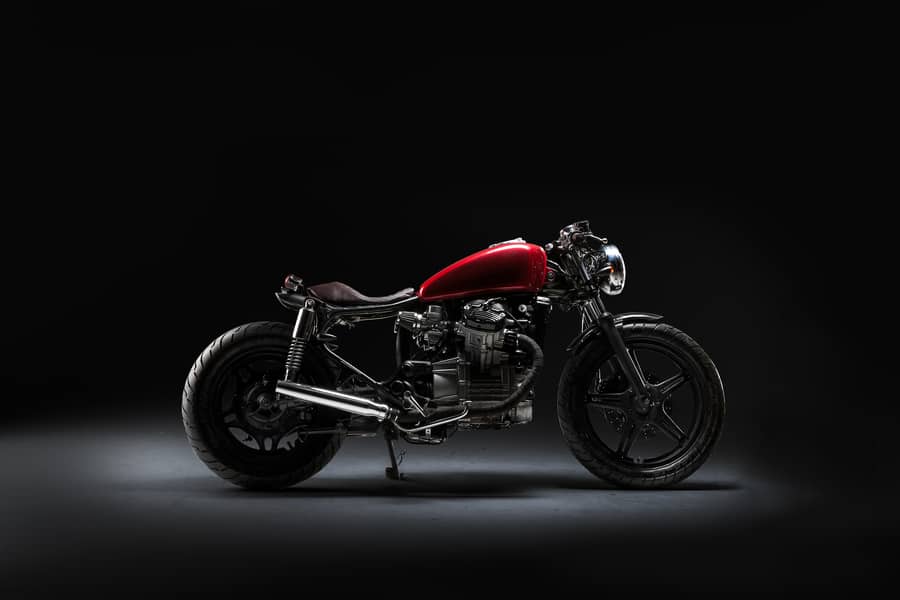
When I bought my first motorcycle, which happened to be an old Japanese 1980 Yamaha XS 850, I was completely overwhelmed with not knowing where to start or which part of the motorcycle to work on first. I had big dreams, but no direction on how to get there.
If you are planning on restoring an old Japanese motorcycle, you might be overwhelmed when you first jump in to your project, but don’t worry. Your hard work will pay off in the end. Below is a list of 30 tips and good things to know that I’ve learned about restoring Japanese motorcycles.
1. There Is A Forum For Everything
Not that many years ago it was common practice to have to buy an owner’s manual and shop manual if you wanted any chance at success in building a project motorcycle. You would have to call mechanics shops, go to the library to look for information, and sort through old catalogs for expensive replacement parts. The internet has completely changed the game on restoration projects.
There is an online community for literally any motorcycle make and model you could think of. The gearheads of the world have united and built communities to answer all the most common questions about their specific motorcycles. If there’s a specific part of your motorcycle you’re trying to fix then there are already 30 people who have posted about it.
Almost everyone on forums love helping other people, and if there’s any that live in your area they might even be willing to come over on a Saturday morning to help you troubleshoot problems. I’m a member of forums for all of my vehicles.
Forums are also great for general knowledge as well, even if it’s not for your specific vehicle. You could search something like “1980 Yamaha XS850 main fuse keeps blowing”, and even if nothing for that motorcycle comes up, you will probably get other search results for similar motorcycles which could be just as helpful. Forums have tips and tricks for everything you could imagine.
2. Japanese Motorcycles Are Easy To Find Parts For
There are more aftermarket parts available for older Japanese motorcycles than any other genre. Online retailers have made shopping for parts so easy. eBay and Amazon have had almost every part that I’ve ever needed for my Japanese motorcycles. Finding parts for my classic Triumph is far more difficult.
Many people have trust issues with buying things on eBay, but if you follow two easy rules you won’t have any problems. Only buy from people who have a 97% or higher seller rating and have sold over 100 items. Only buy from sellers within your own country. Doing those two things will save you all the heartache of dealing with bad eBay sellers.
I love buying things from Amazon like mirrors, handlebar grips, exhaust pipes and wrap, headlights, taillights, turn signals, and any of those parts that are somewhat universal. Amazon does still struggle with their fitment tool that pops up for automotive parts.
Sometimes the tool will say “This does not fit your 1969 Triumph” when the part number is clearly the correct one. So just use your best judgement and make sure the part number is correct and you’ll be alright. I like buying from Prime if I can so I can return things for free if it’s the wrong part. See my recommended motorcycle upgrades by clicking here.
3. Maintenance Is Much Cheaper Compared To American Or European Motorcycles
There are probably 5 or 6 Honda and Yamaha motorcycle shops for every European motorcycle repair shop in the United States. Japanese repair shops are easy to find, and since there are more of them, they generally charge less per hour for maintenance costs.
All the Japanese repair shops I have taken my motorcycles to charge right around $50 per hour, while the Triumph repair shop (that took me a year to find) charged $100 per hour for all repairs.
4. Everything Is In Metric (Which Is Much Easier Than English)
I know some of you old timers are going to argue with me on this one, but metric tool sizes are much easier to use than English sizes. After living in a foreign country that used primarily metric it made me appreciate how much easier everything is in metric. All tools go up in sizes of 1mm instead of fractional sizes.
Japanese motorcycles do a really good job at keeping bolt head sizing the same so you don’t have to use all of your sockets on a single project. Almost all bolt head sizes are 10, 12, and 14mm. Every once in a while you’ll run into something that’s different, but those 3 socket sizes can take apart the majority of the motorcycle.
5. There Used To Be Much Higher Quality Control In Japan Than In America
For some reason, the quality of automotive products in the 70’s and 80’s in the United States really struggled. The same is not true today, but during those 2 decades the American motorcycles really struggled with quality and longevity. This is evidenced by the sharp decline in sales and both Harley Davidson and Indian Motorcycles met their fate. Harley was able to pull out of the slump by restructuring, but Indian wouldn’t make many sells again until the mid 2000’s.
The Japanese motorcycle brands of that generation had great quality and many of them are still on the road today and have been the life-breath of the latest café racer craze of the last 7 or 8 years. Their resale value has shot up unexpectedly and will continue to climb for years to come. The Japanese simply had better motorcycles than the rest of the world and it showed.
6. There Are Very Few Projects That You’ll Need A Mechanic For

Most of the fun of restoring a motorcycle is how empowering it is to be able to fix things yourself. It makes you feel really good that you were able to learn a new skill and accomplish a difficult goal. During your first project you’ll feel overwhelmed, but as you take it one step at a time you’ll be able to learn many new skills like how to fix wiring, how to paint and do body work, how to grind and cut unneeded material, and how to rebuild carburetors.
There are very few things that I would recommend people take their motorcycle to a professional for. There are so many YouTube videos, forums, and online helps that the weekend DIYer can figure out how to do just about anything to their motorcycle.
We have an entire video series about how to restore a motorcycle from start to finish (specifically on a 1975 Honda CB500). Through this guide, we aim to help you restore a motorcycle on your own without a mechanic’s help even through the hardest components such as carb rebuilds, body work, and electrical. Click here for more information if you’re interested in building your dream motorcycle!
7. Your Short-Term Investment Growth Is Usually Much Higher When Restoring A Japanese Motorcycle
I kept very good records when restoring all of the motorcycles I’ve built in the past. Including the purchasing price and all the new parts I bought, I had about $1,500 into each one and would sell them for between $5,000 and $5,500 each. You won’t get that sort of investment growth with buying an already restored classic motorcycles.
8. There Are Endless Design Ideas On Google, Instagram, And Pinterest
A lot of designers get their inspiration by looking at the work of other builders. They see a theme that they like but want to change up a few things to make it their own. Technology in our day has made it so easy to find millions of paint schemes, types of tires, different handlebars, and lights.
I always find the motorcycle online that most resembles what I would like to build and I print out a picture of it and hang it in the garage while I work. It serves as a motivator of the end goal and helps me stay excited throughout the whole build process.
9. You Need Very Little Space To Work On Them
A motorcycle restoration takes up very little space. My first few restorations were done in a small shed in a friend’s backyard. The door was barely wide enough to slip the motorcycle through. I’ve even heard of people that rent a really small storage shed for a few months that don’t have a garage or work space so they have a clean space to store their motorcycle while they get it ready to ride.
10. Japanese Motorcycle Are Easy To Turn In To Café Racers, Brats, Trackers, Cruisers, Or Bobbers
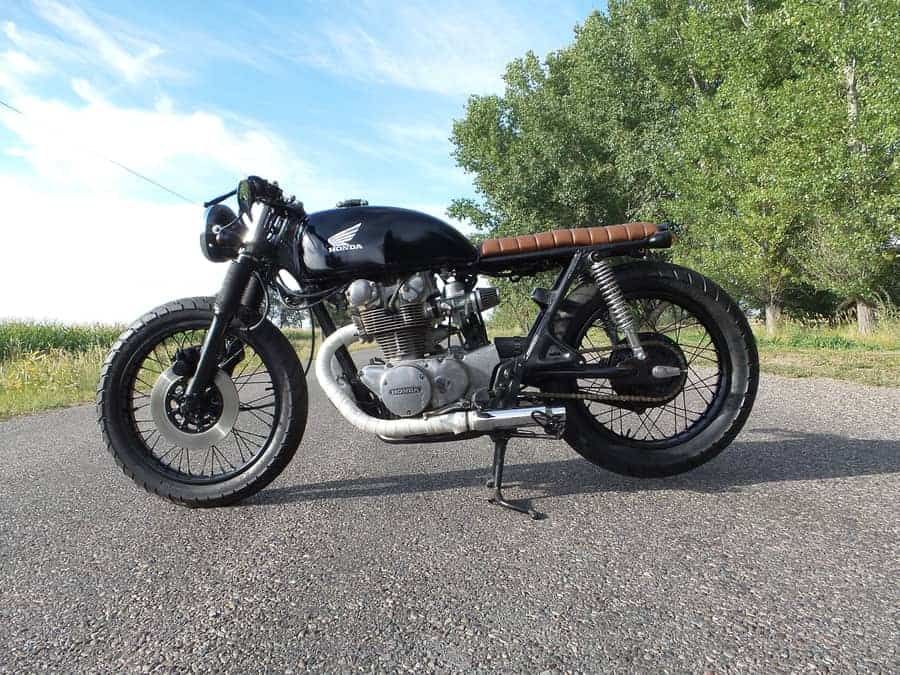
Japanese motorcycles were built so simply with lots of open space and a very straight frame, this makes them a perfect platform to build into whatever kind of motorcycle you want. Many modern motorcycles have more intricate frame designs and odd frame shapes (not round tube like they previously used). This makes reshaping the frame much more difficult in order to fit certain seats.
11. You Only Need Very Basic Tools To Work On Them
I would dare say that 80% of the nuts and bolts on Japanese motorcycles can be removed with a 10mm, 12mm, or 14mm socket. My first few motorcycles I built with very few tools. I only had an angle grinder, a Craftsman socket set, some screwdrivers, and sanding equipment for the tank and fenders.
Buying reasonably priced tools is an investment. Once you have tools and the knowledge of how to use them you’ll be able to save so much money by fixing more things yourself, including fixing things around the house yourself. Click here to see my recommended list of tools.
12. Wiring Problems Are Simple To Diagnose
Japanese motorcycles have very simple wiring harnesses and not a lot of fancy gadgetry. Because of this, it’s very easy to wire up new lights, blinkers, or horns.
I have even fixed a few motorcycles that didn’t have a wiring harness at all and just by getting a wiring diagram for free online I was able to make a simple harness myself. Electrical work is frustrating at first and takes a while to understand, but once you get it then fixes are really fast.
13. You Can Paint The Entire Motorcycle For Under $150
I have painted about 25 vehicles in the last 5 years (motorcycles and trucks) and I have never spent over $150 on a motorcycle paint job.
Professional shops charge anywhere from $500-$1,500 for a motorcycle tank when I’ve called to get quotes. Sanding supplies, primer, bondo, paint, and clear coat all add up to just under $150, and I get comments all the time from people asking me where I took my motorcycle to get painted. You can read my guide here to see how to paint a motorcycle tank, or you can see my other guide here about how to paint a motorcycle frame.
14. Most Mechanics Will Answer Questions For You Over The Phone
I have called local shops dozens of times saying things like, “Hey I’m just an amateur builder and I’m having a hard time figuring out how to take the clutch apart on this motorcycle, do you have any tips for me?” From my experience they really don’t mind spending 5 minutes of their time helping you out.
But don’t call the same ones over and over, that gets annoying for the mechanic. Do as much research as you can and then call, that way you actually understand what they’re saying when they tell you what to do.
15. The Wiring Harness And Battery Can Be Rerouted To Anywhere On The Motorcycle
There is a lot of open space on Japanese motorcycles, which makes it really easy to reroute the wiring harness and get it out of the middle of the frame for that clean open look.
Another easy trick if the wires won’t quite stretch to where you want is to just cut the wires and add a few inches of new wire with a soldering pen and shrink wrap. I personally like the look of tucking the battery underneath the frame so you can’t see it at all, which is a pretty easy project to do.
16. Take One Project At A Time So You Don’t Get Overwhelmed
It’s easy to get overwhelmed when you start a big project like this. Many people take the whole motorcycle apart and then quit because they have no idea what to do next. Don’t be like those people! Make a to-do list before you start the project so you know what you need to do to get through the project. Sometimes I find myself just standing there wondering what to do next. You can fix that and save so much time by making a to-do list.
17. Take A Picture Before Every Nut Or Bolt You Take Off
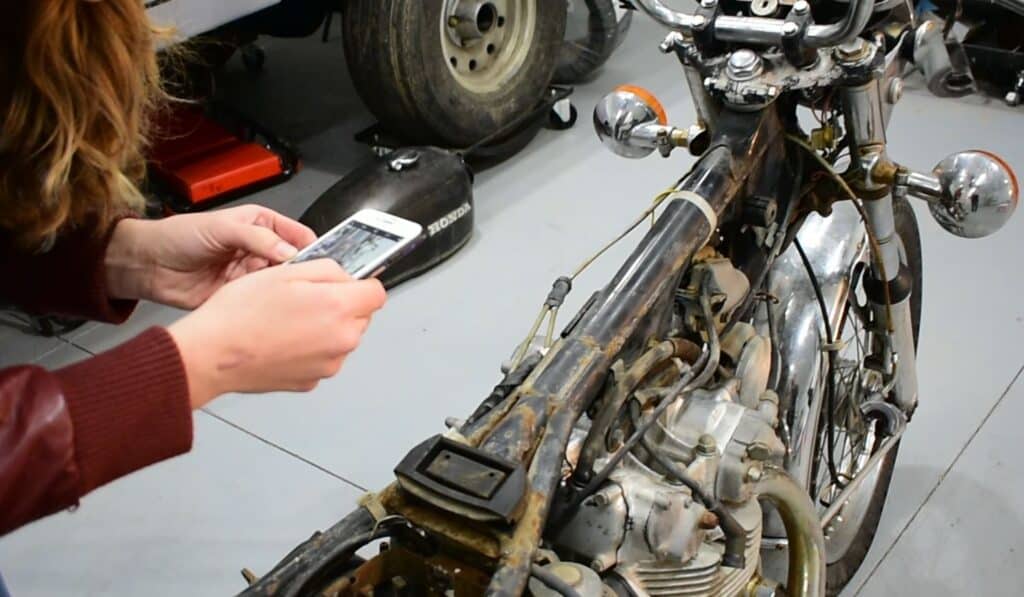
Every beginner makes the mistake of taking something apart and thinking to themselves that because it wasn’t hard to take apart, they’ll remember how to put it back together. But then something happens and you have to leave in the middle of the project and when you come back you have completely forgot where that one bolt goes.
Take tons of pictures throughout the disassembly process. This includes pictures of where certain wires were routed, which sized bolts went into certain spots, or how that fender bolted in place. Take it from me, you won’t remember how it went together, so take pics! And after you take the bolt off put it in a Ziploc bag with a label stating where it came from.
18. Upholsterers Can Help You Design And Make Any Seat You Could Dream Of
Finding a good upholstery shop that can help you design seats is key to finishing off that motorcycle build. They do this sort of thing all day long and they have a keen eye for what looks good.
I always take in a picture of what the finished motorcycle will look like and ask the upholsterer what seat color/threading combo would look best to match the gas tank and style of the motorcycle. The shop that I used would charge me $100-$150 for any seat that I wanted and it took them about 2 weeks to get it back to me.
19. Buy The Clymer Repair Manual
The Clymer manual is generally the best repair manual I’ve found for all the motorcycles I’ve had in the past. But Before you buy it, spend some time looking through forum posts for your specific motorcycle to see if people are recommending a certain repair manual, sometimes other brands have a slightly better one for a specific motorcycle.
For my Triumph, I just stuck with the factory repair manual because that’s what everyone was recommending. Sometimes you can find free copies of them online, but if not then spend the $20 and get one off Amazon or eBay. They are so valuable in helping rebuild certain parts of your motorcycle that can be overwhelming if you don’t have any experienced help.
20. You Can Buy Either A Running Motorcycle Or One That Is In Pieces Since You’ll Be Taking It Apart Anyways
For a first time rider or builder I would always recommend getting a motorcycle that its already running, that way you can learn to ride it for a year before you jump in and start rebuilding stuff.
That way if you wreck it then it doesn’t matter because it was already ugly. But more experienced builders can get away with looking for awesome deals of motorcycles that have been taken apart and are not running.
I bought one for $200 once and it ran just fine when I put it back together. If you know what you’re doing then go ahead and look for a motorcycle that is taken apart, it will save you time since you’ll just have to take it apart anyways (That’s what I did with my classic Ford Bronco I just bought).
21. Getting A New Or Replacement Title For Older Motorcycles Is Easier
I have had 7 different motorcycles over the past few years that I bought without a title. Before you do this, make sure to check your state laws about how to get a replacement title.
I would also recommend doing a VIN check of the motorcycle before you buy it without a title to make sure it isn’t stolen or has a lien on it.
Some states (like Utah) make it incredibly easy to get a new title; all you need a few forms, a few pictures of the motorcycle, and a quick trip to the DMV. Other states make it a lot more difficult. I have had to get replacement titles in Utah, Idaho and Mississippi so far and all of them have been pretty easy.
Be aware that most states require that you insure your motorcycle before registering it. Luckily Japanese motorcycles are fairly cheep to insure (depending on your driving record of course). You can click here to see our page of motorcycle insurance agencies near you and compare rates.
22. Value Of Japanese Motorcycles Will Increase Over Time
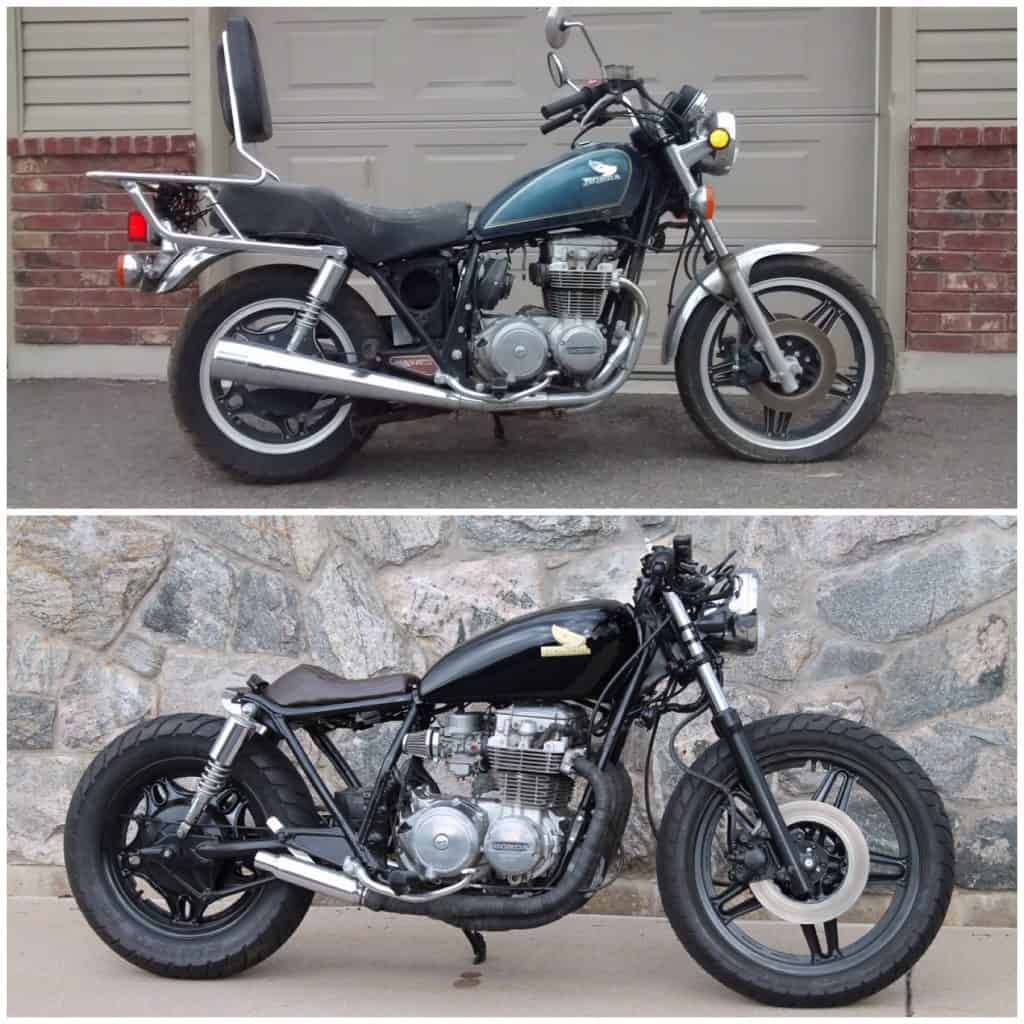
Sometimes it’s hard to predict which makes and models of vehicles will get popular in the future, and no one predicted that 60’s to 80’s Japanese motorcycle would become near as popular as they are now.
Now is a great time to rebuild a classic motorcycle. People without the skills to build one themselves are paying as much for a rebuild as they would spend on a slightly used Harley or Indian. I sold most of my motorcycles for $5,500 while my total investment was about $1,500 and a month of work.
23. Carburetor Repairs And Rebuilds Are Straightforward
Most of the problems you’ll have with owning a classic motorcycle come from the carburetor, but one of their redeeming qualities is that they are extremely simple to take apart and clean. If you’re looking at buying an older Japanese motorcycle and the seller says something like “It ran a few years ago and then just quit” you can almost guarantee it just needs a good carb cleaning.
24. Replacing The Gas Tank Is Usually Cheap
Small dents and scratches are easy to fix with some basic body work, but sometimes there are dents so big that it would be cheaper for you in the long run to just buy another tank.
Luckily eBay has made it very easy to source used and aftermarket gas tanks for Japanese motorcycles for about $100. If your tank has massive dents in it then it might be in your best interest to just replace it, don’t lather on thick coats of bondo to try and fix it because that doesn’t work. See my guide here on how to paint a motorcycle gas tank.
25. Fixing A Dented Gas Tank Is Extremely Fulfilling Work
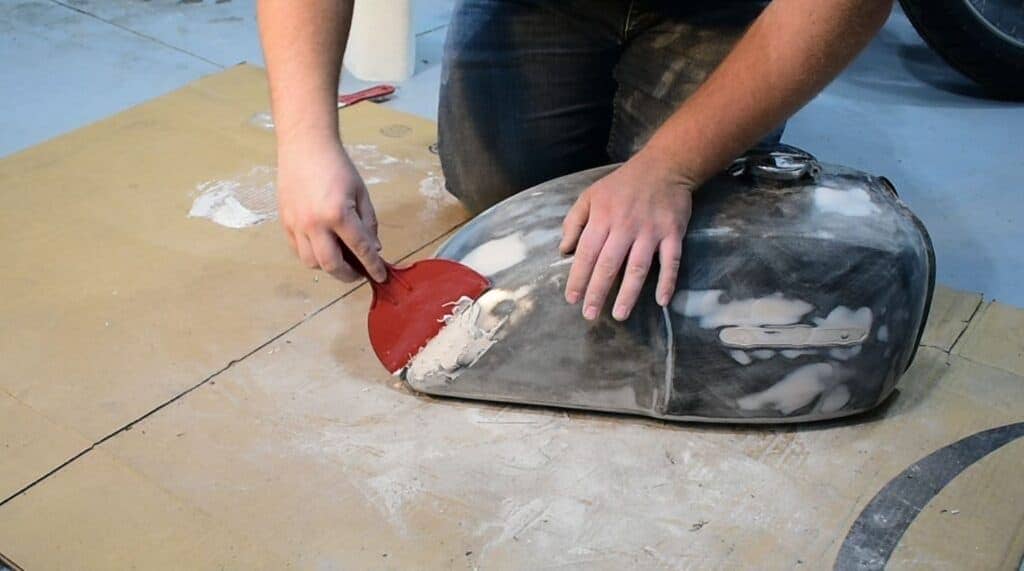
If your gas tank just has smaller dents or scratches then I highly recommend that you learn how to fix it yourself. I think doing body work is fun and it makes me feel really good being able to completely fix a dent and make it look brand new again.
Sanding and using bondo is a good skill to have and a motorcycle tank is the perfect place to start learning. And this can save you hundreds of dollars by doing it yourself instead of paying a professional to do it.
26. You Can Find Dozens Of Handlebar Styles
I was once helping a friend look for an old motorcycle to buy and he had a really hard time looking past the aesthetics and seeing the potential of what it could look like. He kept making comments like “Those handlebars look horrible, go to the next motorcycle.” But the fact is you can get any style of bars you want, just take a look online for the style you want and then search that style on Amazon.
27. You Can Either Restore To Original Or Build It Custom For Your Style
I always liked to build custom motorcycles using my own style, but there are many purists out there who like to restore every single original nut and bolt. Whichever you are, the motorcycle will be worth about the same for now. The thing about Japanese motorcycles is that because they’re so easy to find parts for, you can do either original or custom!
28. Most Old Parts You Take Off The Motorcycle Can Be Sold On eBay
Many times when I would take a motorcycle apart I would be left with a massive pile of unused original parts that I didn’t want anymore. I would sell everything on eBay, Craigslist and Facebook and would end up making hundreds of dollars back from selling this old stuff that I thought was junk. Clean it up and sell it to help fund your project!
29. Always Start With The End Result In Mind
One of the first steps you need to do when starting out with a project is print off a picture of what you have in mind for your build and hang it in your garage, on your mirror, or use it as your phone background as a motivator.
Sometimes you’ll feel like you’re doing more damage than good and that you’ll never finish. Just keep taking it step by step and look at that picture every day as a reminder of what you’re working towards.
30. Don’t Get Overwhelmed, If I Can Do It Then You Can Too
I started out my first project with very little mechanical experience and a cheap tool set. There were days that I thought about giving up and selling the motorcycle for parts but I’m glad I didn’t. Right after I finished that first project I met my wife and our first date was a ride on that motorcycle.
Think of all the fun memories you’ll make by taking your spouse or children on a ride or going out with a group of other riders. Keep working a little bit every day and soon enough you’ll have a working motorcycle. Don’t give up!
Related Questions
How old is the oldest Japanese motorcycle? The earliest Japanese motorcycle recorded was in 1896 when a member of the Japanese House of Representatives imported it and demonstrated it in front of an awe-struck audience at a fancy hotel. Since then, Japan has continued to impressively improve and modernize the motorbike.
Do you need experience to restore a motorcycle? You do not need experience to restore a motorcycle. This is a skill that can be self taught if you have the determination, funds, and space to work with. Click here to see our article that talks more about this.
